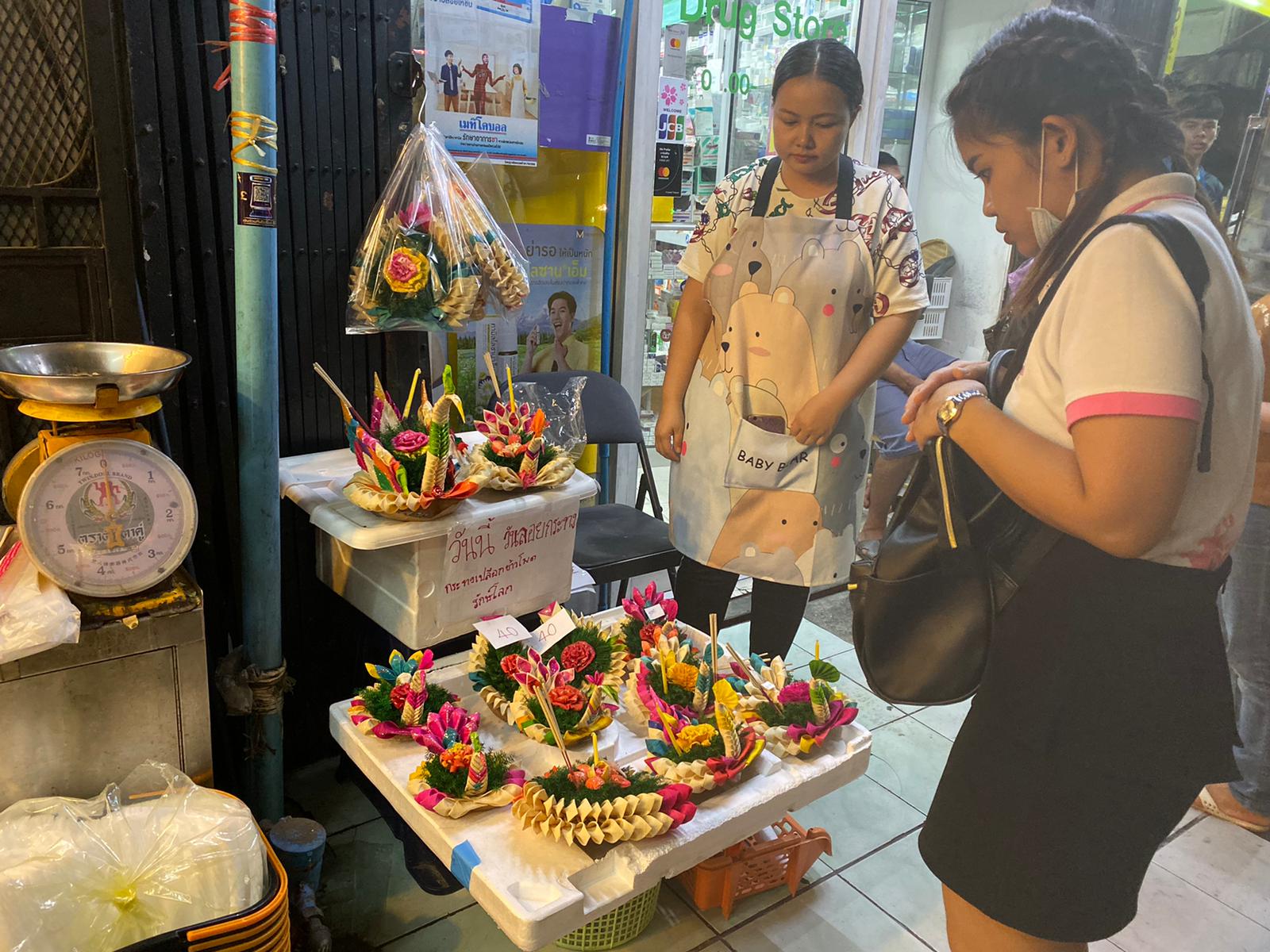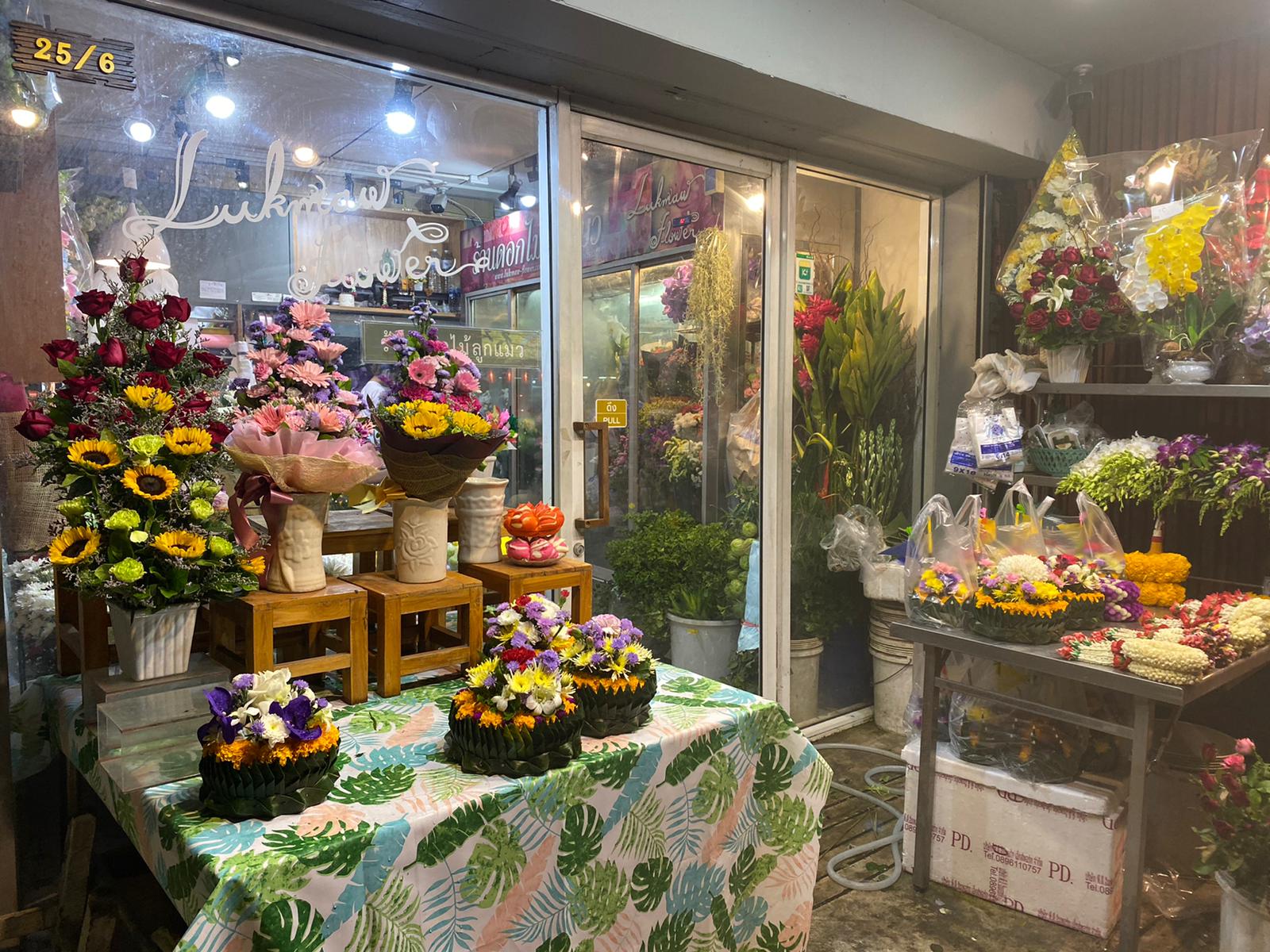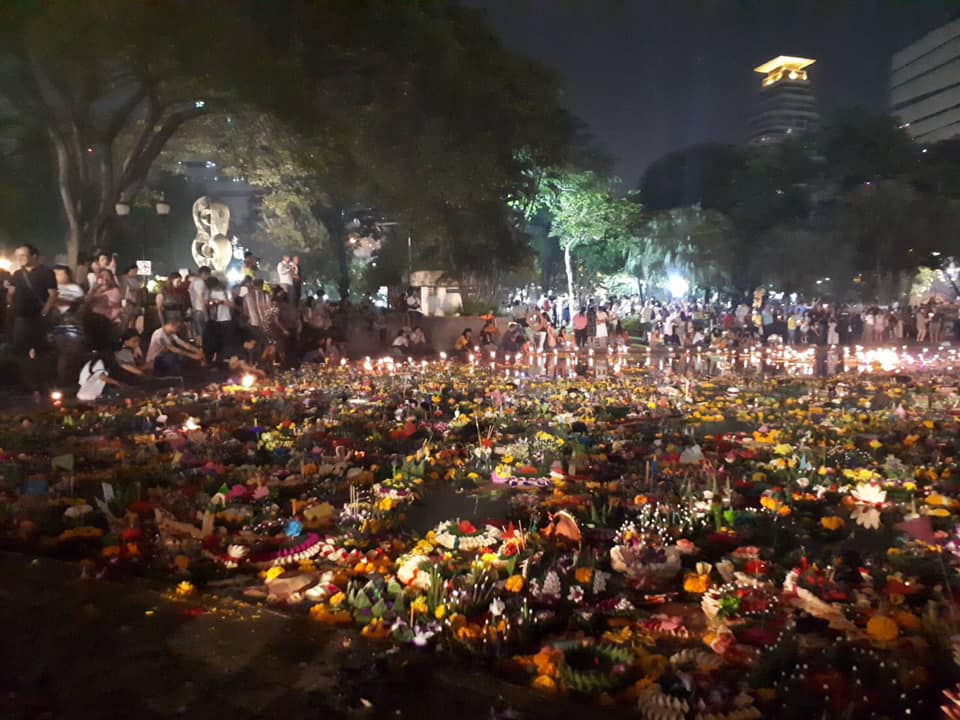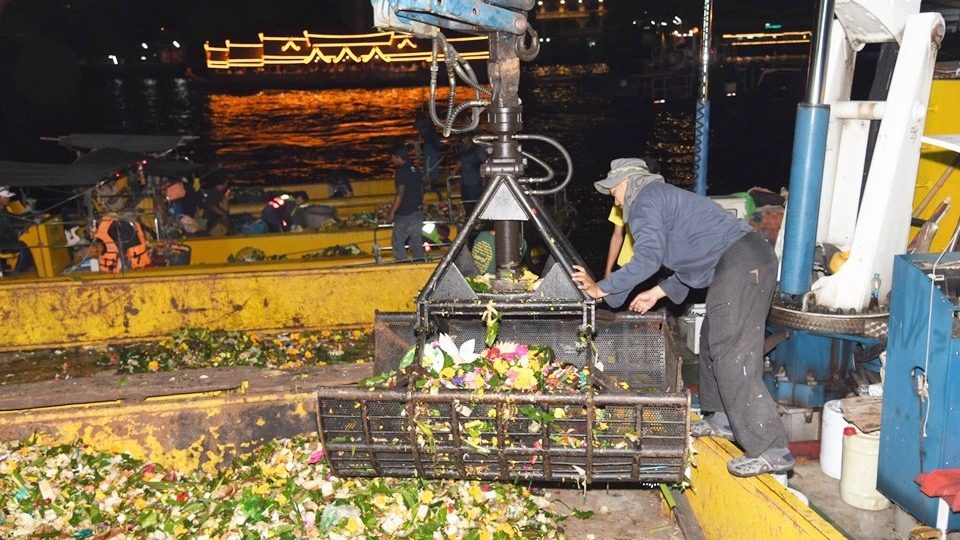After last night’s Loy Krathong celebration, the usual morning-after mess revealed a significantly lower amount of traditional littering took place, according to City Hall.
Slightly more than half a million krathongs were recovered from the capital’s waterways this year, a roughly 40% decrease from last year, a decline supported by anecdotal evidence from several street vendors that folks, whether woke or broke, just weren’t buying as many this year.
Bangkok Gov. Aswin Kwanmuang announced this morning that nearly 96% of recovered floats of krathongs collected were environmentally friendly while just shy of 19,000 were not.
It’s a continuing trendline of floating fewer, less environmentally harmful floats over the years. The total haul, according to the city, was down 300,000 from 2018, when 841,327 krathongs were collected from the city’s waterways.
The city deployed 210 workers to fish the krathongs from the waters; they finished the work by midnight.
Loy Krathong cleanup: Nearly 850,000 floats collected from Bangkok waterways
Several street vendors told Coconuts Bangkok during last night’s festivities that krathong sales had greatly decreased this year.

“I’m selling a lot fewer krathongs this year than last year. I don’t know where the people went; people don’t buy them anymore,” said Pailin Rattanawong, who was selling krathongs made from corn and coconut husks from a tiny stall along Thonglor. Her krathongs started at around THB40 and went up to THB200.
“And in the past, the bigger, more expensive ones would sell better, but now people only go for the cheapest option. They’re not willing to pay more than THB100 for one,” she said. “Two years ago, I used to sell 3,000 to 4,000 baht worth of krathongs a day, now I’m lucky if I make it past THฺB1,000,” she said, blaming the sharp decrease on the “weak economy.”
Nichapat Konchit, another Thonglor vendor who owns a flower shop on the main street, agreed that krathong sales have decreased this year but said the trend began last year. Nichapat’s krathongs were made out of mostly bananas trunk and flowers and sold for about THB200 each.
“When business went well, we sold about 500. But now we’re lucky if we sell over 100 a day,” she said, adding that due to the amount of krathongs that went unsold last year, her shop decided to make significantly fewer this year.

But not all vendors are struggling – or attuned to the ecological times. Nati Sapsanguan, who was selling THB80 foam krathongs outside a 7-Eleven by BTS On Nut said he was selling more this year.
“If last year I sold 50%, this year I sold 80. Business is better this year,” he said, though he agreed that krathong sales had, in general, fallen in the last two years.
Nati believes encouragement from the government to carry on an ancient tradition plus the many events the city planned for the festivities contributed to sustaining krathong sales.

Related:
Bangkok man makes, floats and eats BBQ float for Loy Krathong Eve (Photos)
Loy Krathong cleanup: Nearly 850,000 floats collected from Bangkok waterways




